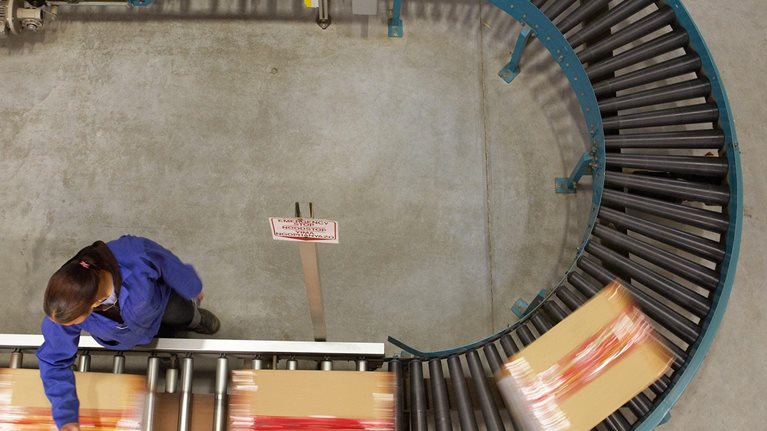In recent years, retailers have taken steps to “lean out” their processes and gain efficiencies—with impressive results. Lean-retailing initiatives have yielded as much as a 15 percent reduction in retailers’ operating costs.1 But with competition intensifying and with customers expecting ever-higher service levels, many retailers are now looking for new ways to further improve productivity and enhance customer service.
One major area of opportunity is workforce management: specifically, labor scheduling and budgeting. Because of the complexity inherent in creating accurate staffing schedules and budgets for a large number of stores, even sophisticated retailers find substantial room for improvement in this area. Off-the-shelf software and solutions—although useful for important tasks such as monitoring employee attendance and managing payroll—typically produce generic schedules that don’t take into account store-specific factors and workload fluctuations. The unfortunate results include high labor costs, inconsistent customer service, and dissatisfied employees.
If a retailer could better predict the number and skill set of employees that each of its stores needs every day (or, better, every hour) of the week, then customers would get prompt sales assistance, shelves would be replenished in a timely manner, employees would be neither idle nor overworked, and, in most stores, labor costs would go down. That’s already happening at a few leading retailers. Chief operating officers have begun looking closely at store activities and taking a more data-driven approach to labor scheduling and budgeting. In doing so, they have captured between 4 and 12 percent in cost savings while also improving customer service—for example, by shortening checkout queues or by having more staff available on the sales floor to assist customers—and boosting employee satisfaction. This level of impact has been achieved at several different types of retailers, from large supermarket chains in Europe to specialty retailers in emerging markets.
A mismatch between supply and demand
Many retailers use workforce-management software to generate a weekly staffing schedule that is unique to each store, usually based on revenue forecasts—more employees work during hours or days when sales are projected to be the highest. Revenue is a sensible criterion for scheduling, but it’s an insufficient one because customers’ buying patterns (average basket size, average purchase price per item, and so on) can vary by hour and by day. A European grocer found, for example, that manned service counters, such as deli and bakery counters, account for a much higher share of revenues on weekends than they do during the week. On weekends, therefore, the required labor hours increase at a higher rate than revenues.
Furthermore, most retailers don’t have a systematic way to account for store-specific factors that affect how long activities take—such as the distance that an employee must walk to transport a pallet from a delivery truck to the storeroom or how many elevators employees can use for bringing products to the sales floor. The same activity can be much more time consuming at one store than at another, even if the two stores have equal revenues.
Just as staffing schedules rarely align with a store’s true labor needs, labor budgets, too, are often mismatched with a store’s current reality. Many retailers decide on labor budgets in an undifferentiated top-down manner: for example, they mandate that each store’s labor costs must not exceed 10 percent of sales. Store managers can then negotiate adjustments based on their intuition or experience. This simplistic approach relies too heavily on store managers’ judgment; it also unfairly penalizes some stores. For instance, a store in which fresh produce contributes a large fraction of sales will be at a disadvantage, because fresh produce takes more time and care to replenish than packaged goods. We found that such differences among stores can lead to labor-cost differences of up to 30 percent, even if the stores’ sales are equal. A seemingly equitable top-down directive thus becomes inequitable in practice; some stores can provide exceptional customer service and a relaxed pace of work for employees, while at other stores, stressed-out workers struggle to meet their service-level targets.
Four prerequisites to an activity-based approach
To revolutionize their labor scheduling and budgeting, innovative retailers aren’t simply relying on off-the-shelf workforce-management solutions. Instead they are taking an activity-based approach—one that matches store employees’ working hours to a changing workload, so that the right employees are working at the right times, performing the right tasks, and spending the least amount of time required for those tasks. Equally important, such an approach helps retailers develop accurate annual labor budgets for each store. An activity-based approach can be immensely valuable, particularly to retailers that employ 20 or more people per store.
Companies have long used activity-based techniques (such as activity-value analysis) to improve processes and reduce costs, but rarely have such techniques been applied to labor scheduling and budgeting. In our analysis of labor-scheduling logic, we identified four prerequisites for excellence in using an activity-based approach:
- store-specific workload calculations, which are informed estimates of how long it takes to complete certain activities (for example, replenishing one pallet) in a particular store, taking into account predefined service and process standards
- reliable forecasts of “volume drivers” (such as revenues per department per hour and product flows) for each store, based on sophisticated regression models as well as store-manager experience
- a flexible workforce—with a mix of full-time, part-time, and temporary staff—that can adapt to schedules that may change on a daily and weekly basis
- robust performance-management processes and systems, with clear productivity and service-level targets, to ensure that all stores are on board and comply with the plan
All four of these prerequisites can be challenging for retailers. We’ve found, however, that the first prerequisite—generating accurate workload calculations—often proves to be the key improvement lever.
How to calculate workloads accurately
The optimal workload calculations set an expectation for best-practice performance while also acknowledging each store’s unique context. In activity-based scheduling, the time allotted to each activity is a network-wide standard time that is the same for all stores, plus any additional time due to the specifics of each store (exhibit). The network-wide standard time in effect establishes a best-practice benchmark for all stores. Store-specific time drivers can then be measured by observation.

A typical supermarket would use this model to allot time for 50 to 150 activities (see sidebar, “One retailer’s results: Lower labor costs, better store managers”). Some activities will be tricky to model. For instance, figuring out how long it should take to ring up purchases at checkout and how many cashiers should be working at any one time isn’t a straightforward calculation, because customers arrive at checkouts randomly. For unpredictable customer-facing activities like these, retailers will need to use queuing theory.2
Retailers should focus on activities that constitute a significant amount of store employees’ workload. For instance, developing a detailed model of how long it takes to adjust a shelf to an updated planogram isn’t necessary, as this activity typically accounts for less than 1 percent of the total workload. On the other hand, replenishment-related activities can take up to 70 percent of the total work hours in a store.
Implementation and rollout
Implementing an activity-based approach requires a tool that can turn inputs (such as revenue forecasts and customer-footfall estimates) into useful outputs for store managers. Outputs might include the required number of full-time employees per hour and per day, the specific tasks employees should be doing during certain hours of the day, and the associated labor costs.
Retailers typically find it easier and faster to build such a tool from scratch and then inject its outputs into their existing workforce-management systems, rather than build the tool within their current HR systems. In our experience, it takes approximately six months to develop an Excel-based prototype, pilot it in a handful of stores to test the accuracy of all assumptions and workload calculations, observe its impact on the workforce, and refine it.

Would you like to learn more about our Retail Practice?
How quickly the tool is rolled out to the entire store network will depend on available resources, but a store-by-store rollout—whereby an operations “coach” helps store employees learn about the new tool and any new processes—is often most effective. Leadership must ensure that the tool is embedded into daily work and fully linked to HR planning and annual budgeting processes. To keep it constantly up to date and relevant, retailers should consider setting up a scheduling team made up of people who have the requisite analytical skills and who are familiar with store operations. The team would be responsible for maintaining and updating the tool and adjusting the workload calculations to new processes.
An activity-based approach can reveal opportunities for improving store processes. In fact, it can serve as the backbone for a continuous-improvement program; ideally, the new scheduling and budgeting tool would be able to run “what if” analyses for any changes in service levels or process standards. And in the event that labor budget cuts become necessary, management teams—instead of just imposing top-down percentage cuts—will be equipped to lead practical and detailed discussions as to which store activities could be speeded up or eliminated entirely, or where service-level targets could be relaxed. In this way, they will be able to ensure sustained improvements in store productivity, customer service, and employee satisfaction, all while keeping labor costs firmly under control.

